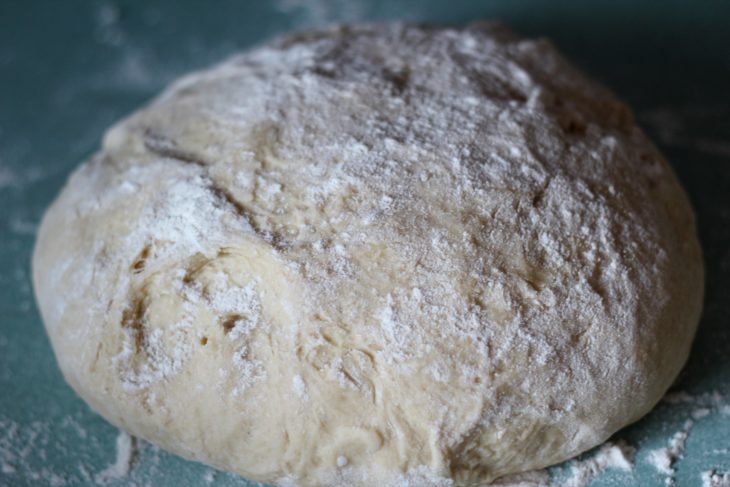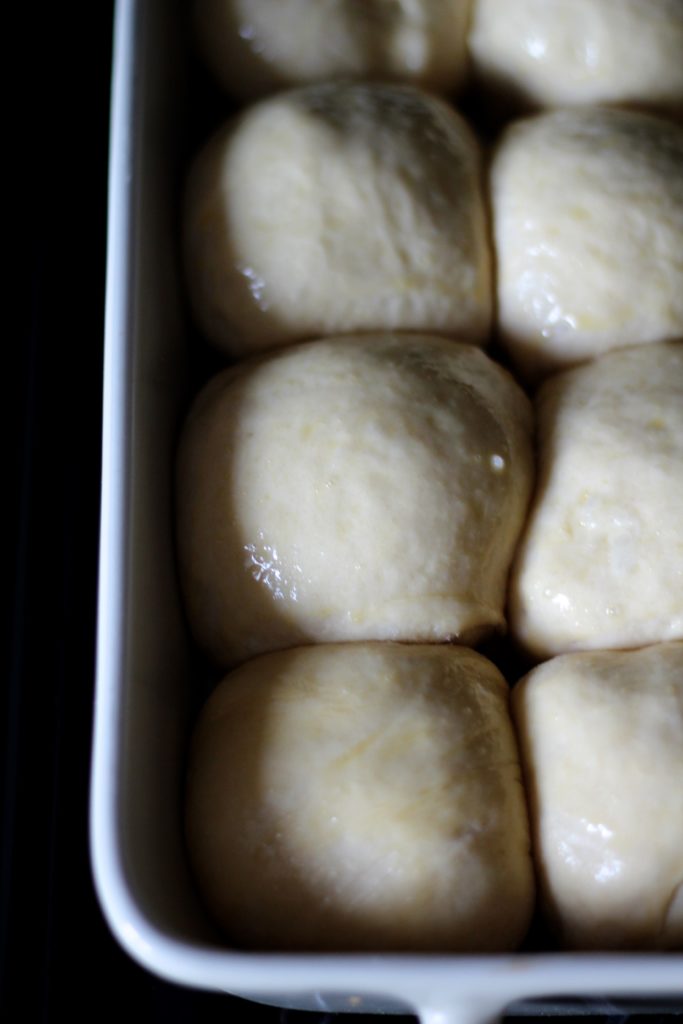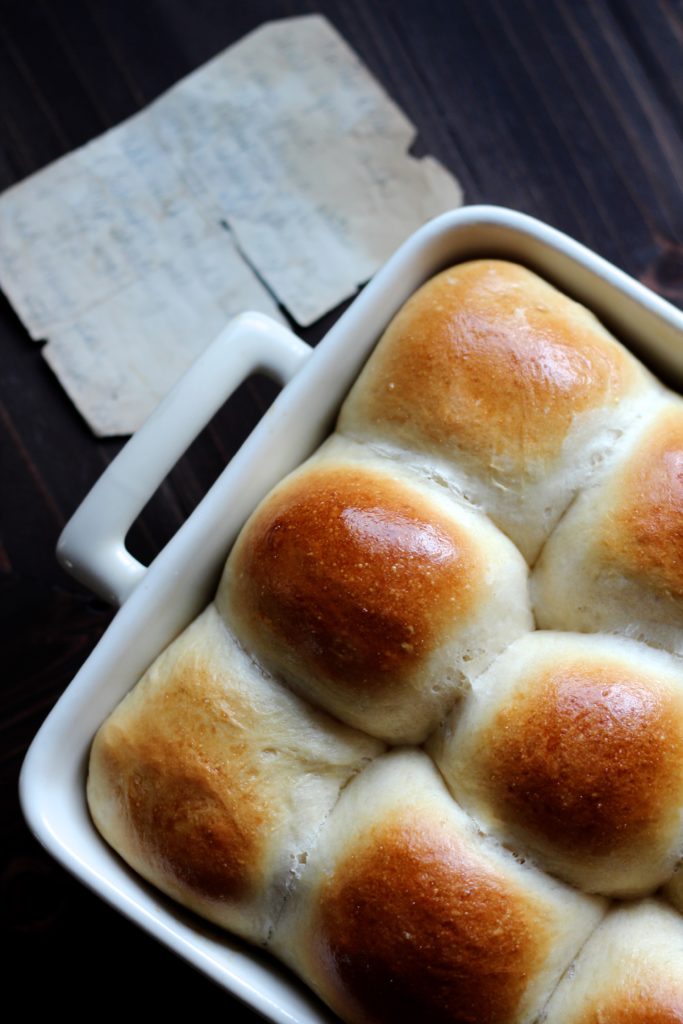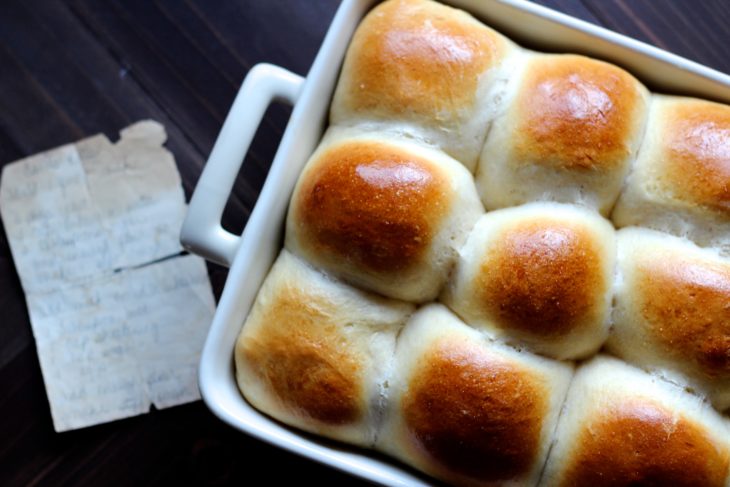22 degrees, perfect fresh snow
What About Us, P!nk
When I was growing up, there was one item that always made an appearance at Wilson holiday gatherings: Carol’s Rolls. While the turkey and the stuffing, the gravy and the sweet potatoes may have been nondescript, varying from year to year and household to household, Carol’s Rolls were an obligatory fixture on the Thanksgiving table. Abundant, golden, and yeasty, this recipe was the thing for which we all clamored, tearing off massive rolls and slathering them with softened butter. Whoever made the dinner rolls was thanked profusely for their hard work, because everyone knew successful execution of the recipe was an art unto itself, labor intensive and hard to get just right.
The truth is, I have no idea how Carol’s Rolls came to be a family heirloom. I have a great aunt named Carol, but the recipe may not have originated with her. I inherited my mother’s copy when she died, hand-written in pencil on a small yellowed scrap of paper that has clearly been folded, unfolded, and taped together over the years – signs of a recipe well-loved and used. Adding to the mystery of it all, the recipe is written in a kind of shorthand, indicative of my mother’s fast and loose approach to recipes in general. She was the queen of improvisation, substitutions, omissions, and just plain winging it in the kitchen. To a recipe developer like myself, my mother’s recipe reads like a little bit of crazy talk. Daring to attempt this recipe is more an exercise in communicating with my mother beyond the grave than anything else. No small task.

For example, my mother’s version has no measurements for flour. None. Even though flour is added in two different stages. “Add enough flour to make a soft dough,” she wrote. This makes me want to scream, and if she were here, we would have an argument about it, ultimately boiling down to her free-spirited personality versus my need for guidelines and boundaries. I imagine her telling me to feel it out and trust my instincts. And I imagine myself retorting, “But are my instincts the same as yours? I doubt it.” But despite my rebuff, she would be right. I need to do a lot more instinct-trusting in the kitchen and in life. And I know it. Dammit.
The first line of the recipe says: “Scald 1 quart milk.” My eyes bulge out of my head as I know immediately that this will produce enough rolls to feed my entire neighborhood. I grab a pen and paper and cut all of the ingredients in half to make the recipe more manageable. Then, I move on to the instructions, which are much more difficult to decipher.
Between the lines I need to read the things she isn’t saying. My internal dialogue continues. “Do I bloom the yeast, mother? My readers will want to know these things,” I urge her. No answer, of course. “Do I knead the dough before letting it rise? Do I knead the dough at any stage, ever? You never say…” Silence. “C’mon, mom. Seriously?” Crickets. Flustered, I stop my stand-mixer as the motor starts to work harder against the dough, knowing full well she didn’t ever instruct me to use a stand-mixer in the first place. “You tell me to add enough flour to make a stiff dough. How do you define stiff exactly?” She inevitably tells a dirty joke in my head and I pretend not to think it’s funny. “Thanks mom. Super helpful,” I think to myself.

To add insult to injury, after hours of kneading, rising, and punching down, there is no baking temperature or baking time listed. Nothing. The recipe ends as mysteriously as it began, “Let rise again, punch down, and use for bread, rolls, doughnuts, or long johns.” First off, I thought this was a recipe for Carol’s Rolls; what the hell is a long john? Secondly, how hot should my oven be? Third, how long should I bake these?… No answer yet again.
I guess I’ll just have to trust my instincts. Thanks, mom.

Here’s my interpretation and adaptation of Carol’s Rolls. Happy Thanksgiving!
Pull Apart Dinner Rolls
Makes about 18 large rolls
- Stage 1:
- 1 cup warm water
- 1 package active dry yeast
- 1 tablespoon sugar
- 1 1/2 cups bread flour
- Stage 2:
- 2 cups milk
- 1/2 cups coconut oil, melted (or shortening)
- 1/2 tablespoon salt
- 1/2 cup sugar
- 2 eggs
- 6 cups bread flour
- For brushing the rolls:
- 1 egg, beaten
Stage 1:
To the bowl of a stand-mixer fitted with the dough hook attachment, add the water, yeast, and sugar. Stir together briefly and allow the yeast to bloom, about 5 minutes. Add 1 1/2 cups flour to the yeast mixture, turn on the mixer, and mix until everything comes together and a very loose soft dough forms, about 1 minute. Cover the bowl with plastic wrap and allow to rise in a warm place, 1 hour.
Stage 2:
Meanwhile, scald the milk. Allow the milk to come to room temperature. When cooled down, whisk in the coconut oil, salt, sugar, and eggs.
When the dough is done rising, place it back onto the stand mixer fitted with the dough hook attachment. Turn on the mixer to low and steadily pour the milk mixture into the mixing bowl along with the dough. Gradually add flour 1 cup at a time until you reach 6 cups, or until a stiff dough forms. Turn the mixer up and “knead” the dough with the dough hook for 2 minutes, until smooth and elastic. Cover the bowl with plastic wrap and let rise, 1 hour. Punch the dough down to release the air. Cover and let rise again, another hour. Punch the dough down a second time, then turn the dough out onto a floured work surface.
Grease a 9x13 baking dish as well as a 9 inch round cake pan. With floured hands, form the dough into 18 round rolls, placing them seam side down into the prepared pans. Cover the rolls loosely with plastic wrap and let rise about 40 minutes.
Meanwhile, preheat the oven to 375 degrees. Make sure your baking rack is in the center of the oven. Remove the plastic wrap from the risen rolls. Using a pastry brush, brush the top of each roll with the beaten egg. Bake the rolls for 25 minutes or until deep golden brown on top and cooked through.











